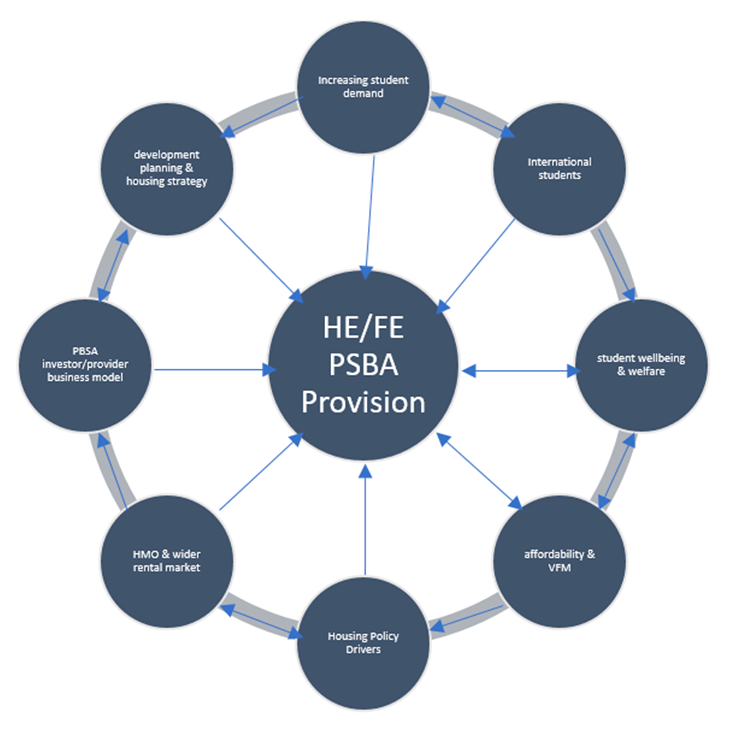Purpose-built student accommodation (PBSA) and student housing: research findings
This report is the main output from a research project we commissioned in January 2022. The research was commissioned to inform the work of the Purpose Built Student Accommodation (PBSA) Review Group.
Study Context
PBSA is accommodation specifically designed, built or adapted for the purpose of housing students. It may be on- or off-campus, and owned or managed by a university, private or third sector provider. This includes accommodation which is occupied through nominations agreements (allocation of rooms taken by the university within a private/charitable provider block), or through direct let by a private or charitable provider. There is a definition of student accommodation in paragraph 5 of schedule 1 of the Private Housing (Tenancies) (Scotland) Act 2016. This defines student accommodation either by reference to the identity of the landlord (universities, colleges etc.) or the planning permission for the accommodation (construction, conversion, change of use etc.). About one-quarter of UK full-time and sandwich students live in PBSA during term-time; private renting (PRS) (including HMOs) remains a popular accommodation option for many (27%), 22% will stay in the family home and 19% in their own home.
The 2020-21 Programme for Government described PBSA as a 'high-profile policy area', stressing the need for a Review:
In the context of the significant growth in purpose-built student accommodation and COVID-19, we will conduct in 2021 a review of purpose-built student accommodation, in partnership with stakeholders. This will be taken forwards in parallel with work to ensure rent affordability and improving standards across the Private Rented Sector.
Student accommodation is also central to the ongoing reforms to the wider rental sector, as part of the sector-wide implementation of Housing to 2040.
Several factors explain the increase in concerns about student accommodation in Scotland. The first of these is the increasing demand for student accommodation that flows from increasing student numbers. As numbers continue to rise, there is clearly going to be greater pressure on these modes of provision as well as the more traditional rental market.
A second driver is reform to the private rented sector. The new private tenancy arrangements for Scotland were legislated for in 2016 (The Private Housing (Tenancies) (Scotland) Act 2016), creating open-ended tenancies, finite and reduced means of repossession by landlords and a 28 days' cooling off period for tenants at the start of tenancies. Students living in university owned or private PBSA were exempted from this legislation, such that they would continue to be housed under a common law contract with the provider. However, the majority of students living away from home are in the HMO PRS and would be covered by the new tenancy arrangements, thus creating a division in rights and law.
Third, the Covid-19 pandemic and lockdown created an awareness of the significant challenges facing students in private PBSA and student halls in terms of isolation, mental wellbeing, educational experience and financial precarity. Many international students stayed away and took courses online remotely. The Scottish Government introduced temporary measures, for instance, giving all students 28 days' notice to quit (recently suspended). This in turn has put pressure on the business model of PBSA providers.
Figure 1 is a schematic representation of the drivers of student accommodation in Scotland and how they may interrelate with each other. Key drivers include: student demand, wider housing policy, the PBSA provider/investor business model, the wider HMO rental market, local development planning norms and housing strategy concerns. Two-way arrows indicate plausible two-way relations. The diagram is inherently multidimensional and helps us to recognise the complexity and multiplicity of student accommodation issues.

Contact
Email: socialresearch@gov.scot
There is a problem
Thanks for your feedback